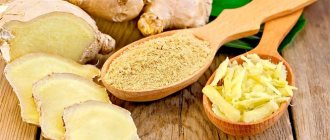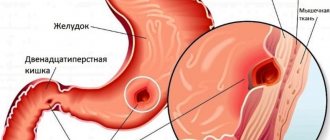The Latin name of one of the varieties of elecampane is Inula Helenium. They say that the plant got its name in honor of Helen of Troy. The ancient Greeks believed that the fiery yellow flowers of elecampane appeared in the places where Helen's tears fell when Paris kidnapped her from Sparta. This plant was also called Elenina grass in Rus'. Although there were other names - oman, divosil, wild sunflower, somnit.
Our ancestors considered this herb to be the source of “nine powers”. It is known that Russian warriors, when going on a campaign, always took with them crushed elecampane root, which served them as a talisman and protection from the enemy and evil forces. And women believed in another magical ability of Elena’s herb - love spell.
Botanical characteristics
Elecampane belongs to the same plant family as sunflowers and asters. There are almost two hundred varieties of this herb, but elecampane extract is most often used in herbal medicine. This is a tall perennial erect plant with a velvety stem and the same petals. The stem of elecampane is thick and fleshy, the leaves are large, oval, pointed at the ends. The sunny yellow flowers of elecampane could easily be confused with aster, if not for the extremely tall stem (mature grass grows up to 1.5-2 m in height). And many people call elecampane a smaller copy of sunflowers. Sunny flowers up to 10 cm in diameter appear, as a rule, in mid-summer and delight the eye until autumn.
Content:
- Botanical characteristics
- Beneficial features
- What the researchers say
- Elecampane in folk medicine
- Elecampane recipes
- Possible side effects
- How to grow
- How to prepare correctly
- How else are elecampane used?
The plant is distributed throughout Europe and in temperate latitudes of Asia. Thickets of elecampane are not uncommon in northwestern India and southern Siberia. It is also found in some US states.
Where the wonderful healer elecampane grows
Ninesil tall is a perennial plant of the Asteraceae (Asteraceae) family. It reaches a height of up to one and a half meters, has a thick main rhizome, from which several smaller roots emerge. It blooms in June-July, and the seeds ripen in August. Its leaves are hard on top and quite soft below, and its flowers are golden yellow. It is widespread in the southern and central parts of Russia, and is found in southern Siberia, Ukraine, Belarus, and Kazakhstan. There are about two hundred species of elecampane in the world; nine species grow in Crimea alone. We are interested in elecampane because it is used in treatment. It grows on the banks of rivers, streams, lakes, in some meadows and forest clearings.
The ancient Roman historian Pliny mentions the generic name of the plant - Inula and the specific epithet helenium. Some authors associate the latter name with the Greek word helios (sun) due to the shape of the inflorescence and the color of the flowers. Pliny believed that the plant grew from the tears of Helen, whose abduction was the reason for the Trojan War. There are also other names: high oman, galagan, wild sunflower, ninesil and elenina grass.
This unique plant is successfully used to get rid of many ailments. For treatment, the roots of the plant are mainly used, less often - flowers. It is best to choose a two to three year old plant, as it contains more nutrients. The roots are harvested in the fall, from the beginning of fruiting until frost. They are then dried for two days in the open air, and then dried under a canopy.
Beneficial features
Since time immemorial, elecampane has been valued as an effective remedy against respiratory diseases. The herb extract has a warming effect on the respiratory system and promotes easy removal of phlegm. The plant has proven its benefits in the treatment of bronchitis, bronchial asthma, COPD (chronic obstructive pulmonary disease).
The herb and elecampane root taste bitter. And this property makes it useful for improving the functioning of the digestive system. Helena herb extract improves appetite, activates the stomach, and is also useful for removing parasites from the body.
Herbalists are well aware of another healing ability of elecampane. A medicine against tuberculosis has been prepared from the root of the plant for many years. The herb, as research confirms, has an antiseptic effect. And this fact explains why the plant extract is also used to treat infectious diseases, including influenza and tonsillitis.
In addition, this plant is believed to be useful for treating infertility and menstrual irregularities in women of all ages. It is good to drink decoctions of this herb for hemorrhoids, diabetes, epilepsy, general weakness and headaches.
Nutritional characteristics per 100 g of dry root
| Calorie content | 60 kcal |
| Cellulose | 38 g |
| Vitamin C | 2 mg |
| Vitamin B3 | 7 mg |
| Calcium | 1 g |
| Chromium | 0.1 mg |
| Cobalt | 0.18 mg |
| Iron | 0.4 mg |
| Magnesium | 750 mg |
| Manganese | 0.08 mg |
| Phosphorus | 150 mg |
| Potassium | 0.01 mg |
| Zinc | 0.39 mg |
What the researchers say
Back in 1804, scientists first isolated a substance from elecampane, which was later named inulin. By the way, this compound got its name from the Latin name elecampane. Inulin is the main component of the chemical composition of Elenina grass. In addition to it, the plant contains essential oils and saponins.
It has been established that inulin has a beneficial effect on the bronchi. Scientific experiments have shown that the amount of inulin in a plant varies depending on the season. The maximum concentration of the beneficial substance is observed in autumn. For example, a root dug up in October contains almost 45% inulin, while a spring sample contains only 19%. In the spring months, inulin is replaced from the root by other substances, such as levulin, mucus, glycosides, and simple carbohydrates.
Alantolactone, found in elecampane, is believed by researchers to have anti-inflammatory properties. In addition, this substance inhibits mucus secretion and strengthens the immune system.
Elecampane has a tonic, expectorant effect and stimulates coughing and removal of mucus from the lungs. By the way, it is believed that the essential oils contained in it impart these properties to the plant.
Gelenin is an important component of elecampane
In treating problems of the gastrointestinal tract, elecampane has no equal among natural remedies. What is the secret of this “miracle plant”? The roots contain essential oil, which contains a special substance – helenin. It is believed that this is responsible for the main therapeutic effect of elecampane. Thanks to many beneficial enzymes and minerals, the digestion process improves. Active substances increase blood flow, stimulate the functions of the liver, stomach, and pancreas. A decoction of the roots restores appetite and restores low stomach acidity. Metabolism also improves significantly. With proper treatment, elecampane helps cope with gastritis and ulcers. It can be used as a bile-forming and choleretic agent. This is an effective medicine for diarrhea, flatulence, bloating, and colic. It also stops diarrhea of infectious origin and helps with hemorrhoids.
Elecampane in folk medicine
In folk medicine, the root of Elenina herb is most often used, although all parts of the plant have health benefits. It is believed that the most beneficial substances in the plant are concentrated in the second year of its growth. Two-year-old roots are usually collected in the fall.
Even in the ancient world, people used the medicine from elecampane to treat stomach disorders and relieve heaviness after overeating at luxurious banquets. Elenin's grass also enjoyed fame as a cure for colds. The ancients noticed that elecampane has a good diaphoretic effect.
Interestingly, in medieval Europe, a wine drink was prepared from the roots, which helped with stomach diseases. The monks called this medicine "Paul's drink", in honor of the apostle, who advised drinking a little of this drink to maintain a healthy stomach.
And in the 19th century in Europe they learned to cook elecampane in sugar syrup. The resulting sweet syrups, candies and lozenges were used to treat coughs and asthma. And adherents of all-natural medicines preferred to chew peeled elecampane root instead of sweets. At first, it does not taste or smell very pleasant, but when chewed, a pleasant odor is released from the root, reminiscent of the aroma of violet.
Herbalists use all parts of the plant to prepare medicines, from the bright yellow flowers to the roots. Tinctures, decoctions, and syrups are made from the herb.
Elecampane root has several medicinal properties. It is known as a natural antiseptic, diuretic, diaphoretic, and expectorant. In ancient times, herbalists used preparations from elecampane to treat women’s diseases, swelling, as well as diseases of the skin and joints.
A decoction of the root is useful for asthma, bronchitis, upper respiratory tract diseases, and hay fever. To prevent respiratory diseases, stimulate digestion and improve liver function, a non-concentrated decoction of the root can be taken on a regular basis. An alcohol tincture from the rhizomes of Elenina grass is useful for diseases of the respiratory system, and elecampane roots infused in red wine have anthelmintic properties. Syrup (boiled pieces of root in a sugar solution) is useful for coughs.
By the way, bright yellow elecampane flowers in the form of a decoction can also be a good medicine for a wet cough. The same remedy reduces nausea and stops vomiting. To eliminate digestive disorders, it is useful to drink teas from elecampane flowers in combination with ginger and licorice root.
External use of elecampane decoction will help get rid of many skin diseases, including eczema, rashes, and ulcers. Back in the 17th century, herbalists used a decoction of elecampane to wash rotting and poorly healing wounds. In addition, it is known that compresses from root tincture help relieve cramps, pain due to gout, radiculitis, and osteochondrosis.
From nine or more ailments
Elecampane contains natural saccharides (inulenin and inulin), benzoic acid, essential oil, flavonoids, as well as potassium, magnesium, manganese, and iron. It is also rich in vitamins C and E. The essential oil is very useful; tricyclic lactones are found in it, among which alantolactone predominates. Thanks to this, elecampane is actively used by the pharmaceutical industry.
It is no coincidence that this plant is so loved by the people. It was previously believed that it helps cope with nine ailments. Thanks to the latest research, it has become clear that the spectrum of action of elecampane is even wider. In particular, it is successfully used for the treatment and prevention of colds. Its diuretic, diaphoretic, blood purifying, and wound-healing properties are well known. Can also be used as a sedative. It is successfully used against hypoxia, migraine, angina pectoris, tachycardia and cerebrovascular accidents. Stops diseases of the oral mucosa and gums. It will help get rid of throat diseases, pneumonia, radiculitis and toothache. Another decoction of elecampane roots successfully treats flu and rheumatism. Thanks to vitamin E, it is an antioxidant, and therefore has rejuvenating properties.
Elecampane recipes
Tonic drink
This potion is prepared from fresh or dried elecampane roots. You will need about 30 g of fresh root, and no more than 50 g of dried root. In addition, take about half a glass of apple juice, a liter of water and 100 g of sugar or honey. A decoction is prepared from water and roots (cook for about half an hour). Honey (sugar) and apple juice are added to the slightly cooled brew. It is useful to drink such a tasty medicine three times a day, 3 tablespoons.
Medicine for tachycardia
It is very easy to prepare: just mix dry elecampane roots and vodka (alcohol) in a 1:2 ratio. It is recommended to infuse the medicine in a dark place for 14 to 21 days. Then take a teaspoon before meals.
Tincture for the treatment of lungs
If you drink this medicine a tablespoon before each meal for at least 2 months, the health status of chronic lung diseases, including tuberculosis, will noticeably improve. The preparation is prepared from ground fresh roots and vodka. Take 250 ml of alcohol per glass of elecampane root pulp and leave for 9-14 days.
For cough treatment
This decoction is suitable for treating coughs in children and adults. It is prepared from a tablespoon of dry roots and a glass of water. Cook for about 15 minutes, then wrap in a warm towel and leave for another half hour. Take a tablespoon several times a day.
Remedy for skin diseases
For the treatment of skin diseases, washing wounds and burns, a decoction of 110 g of crushed roots and a liter of water is suitable. Cook over low heat for at least 3 hours.
To improve male and female fertility
To increase the chances of successful conception, it is useful for men and women to drink a decoction of Elenina herb. Take a tablespoon of finely chopped roots for a glass of boiling water. Cook in a water bath for about a quarter of an hour. Take a tablespoon every 2 hours. Drink for 3 days, then take a week break and resume treatment.
For weight loss
Interestingly, elecampane is a useful tool for combating excess weight. No, scientists have not found any components in this plant that could miraculously break down fat deposits. But elecampane has another beneficial property - it dulls the feeling of hunger, curbs appetite and at the same time strengthens the immune system, improves mood and gives energy (it was not for nothing that ancient gladiators used powder from elecampane root as an energy drink). So, to fight appetite and excess weight, you will need about 50 g of crushed grass roots and a glass of cold boiled water. Mix the ingredients and leave overnight. Drink in the morning. One portion of roots can be infused three times, then take a fresh portion of elecampane. They say that the “brutal appetite” disappears already on the third day of treatment.
Causes of stomach diseases
Diseases of the gastrointestinal tract have become such a common occurrence that many do not attach any importance to it. Many people treat gastritis especially frivolously. And in vain, because over time it can turn into an ulcer.
Gastritis is an inflammation of the mucous membrane of the stomach walls. There are two types: acute and chronic. The first of them is a consequence of overeating, consuming low-quality foods and alcohol abuse. May develop due to metabolic disorders or kidney disease.
Symptoms of acute gastritis: a feeling of heaviness and fullness in the epigastric region, nausea, vomiting, diarrhea. The skin and mucous membranes turn pale, and the temperature may rise.
Chronic gastritis occurs as a result of frequent poor nutrition, consumption of spicy foods, and alcohol. Its appearance can be provoked by long-term use of medications that inhibit the gastric mucosa. It is also harmful to read while eating and chew food poorly.
Main symptoms: heartburn, frequent belching, rumbling in the stomach. Sometimes this type of gastritis is accompanied by bleeding in the stomach.
A stomach ulcer is a disease characterized by deformation of the mucous membrane of this organ. The patient complains of pain in the upper abdomen. Weight loss and nausea are usually observed. There may be vomiting of blood or dark substances. If the disease is neglected, a perforated ulcer may occur, which is accompanied by severe bleeding. In this case, only surgery will help. A duodenal ulcer, which is adjacent to the stomach, develops in a similar way.
Causes of the disease: hereditary predisposition, infections, irregular diet, smoking, alcohol and coffee abuse. It can be triggered by stress and insufficient sleep.
Possible side effects
Elecampane is a useful medicinal plant, but it can be dangerous for some people. We are talking about people prone to allergies. If a person has had allergic reactions to chamomile, echinacea, or pyrethrum, then elecampane will most likely cause an allergy. A reaction to the plant may include vomiting, diarrhea and cramps.
Preparations from elecampane are prohibited for pregnant women (the plant stimulates the uterus), for kidney dysfunction and cardiac disorders.
How to grow
Best materials of the month
- Coronaviruses: SARS-CoV-2 (COVID-19)
- Antibiotics for the prevention and treatment of COVID-19: how effective are they?
- The most common "office" diseases
- Does vodka kill coronavirus?
- How to stay alive on our roads?
In addition to wild elecampane plants, people also use specially cultivated varieties of grass. Elenina grass reproduces in two ways: by seeds and by dividing the roots. The plant prefers moist and well-drained soil. Grows well in shaded areas of the garden.
Seeds are sown in open soil in the spring. But a more effective way is using root cuttings taken from mature plants. Root cuttings are usually harvested in the fall. During the winter they are kept in the basement, and in the spring, when the danger of frost has passed, they are planted in the soil. Each root is rooted at a distance of 25-30 cm from each other. To improve growth, the soil can be dug up before planting (or in the fall). In the first year of growth, elecampane requires care and protection, in particular from frost (it is better to insulate young plants during the cold season). In the second year, you can already harvest greens and roots of medicinal herbs.











